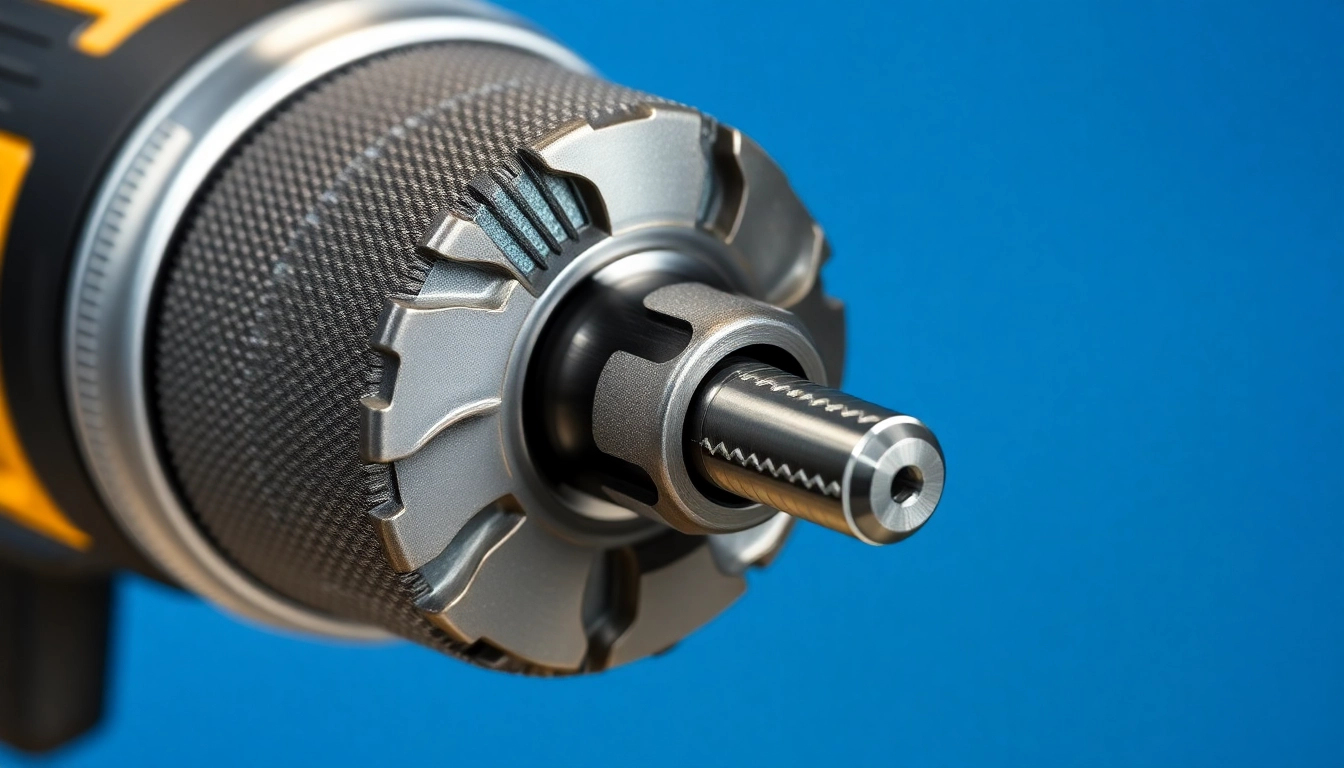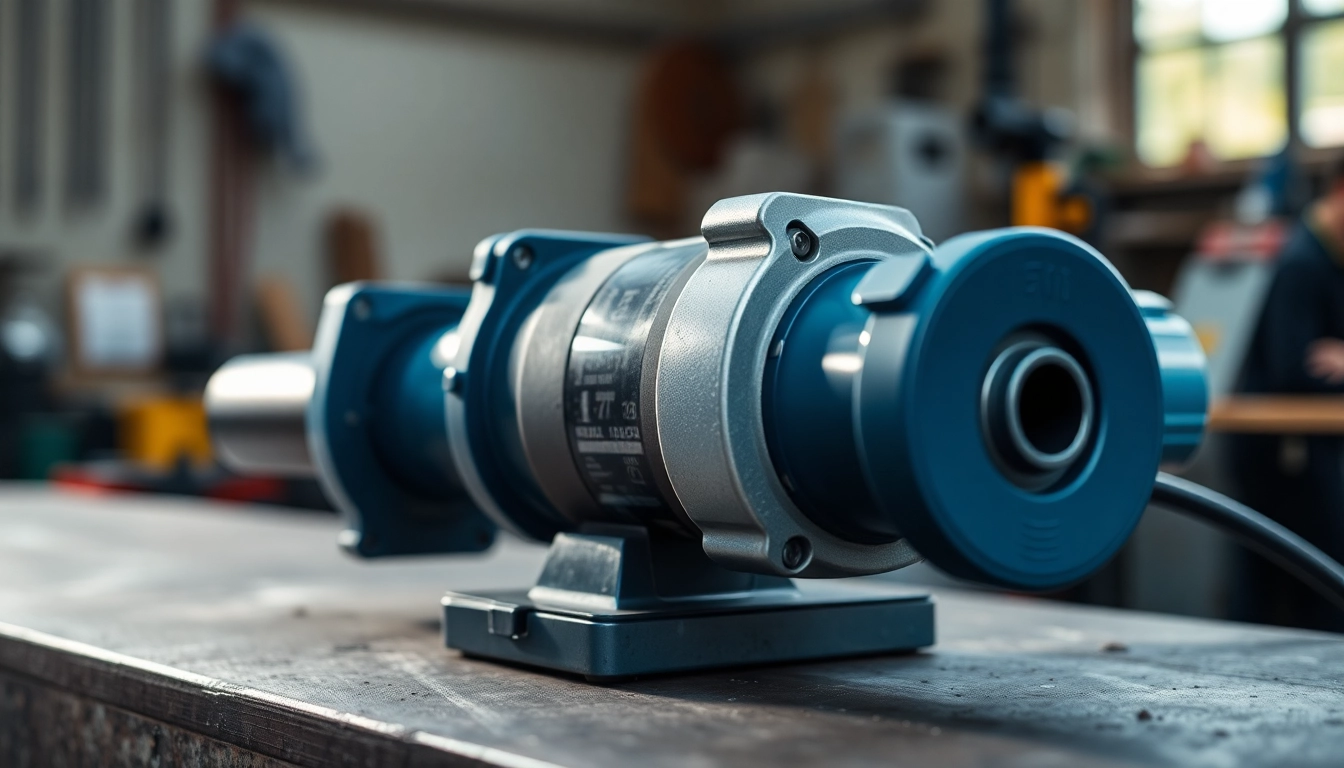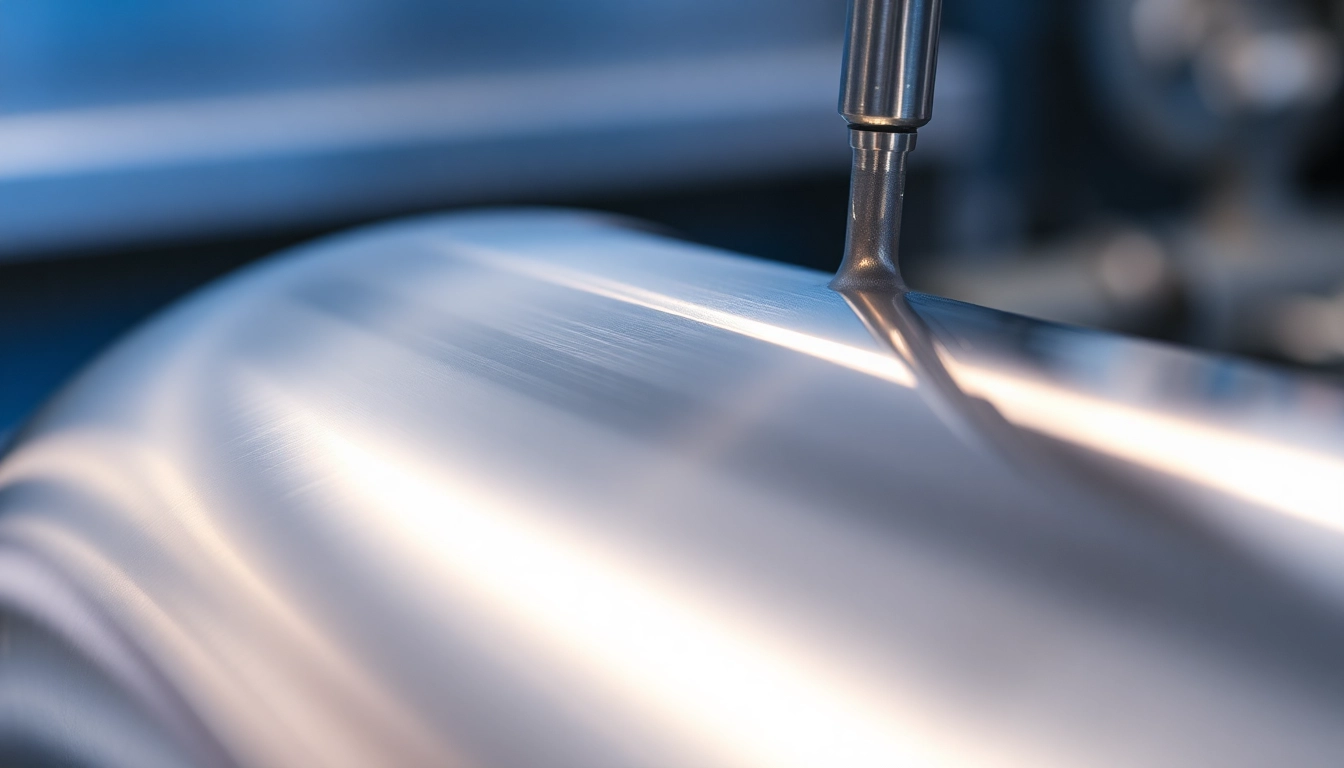Understanding Drill Chucks
Drill chucks are essential components of power drills, serving as the interface between the drill motor and the bit that cuts through various materials. Understanding the nuances of drill chucks can significantly enhance a DIY enthusiast’s or a professional’s efficiency and tool performance. To learn more about your choices for drill chuck options, delve further into this comprehensive guide.
What is a Drill Chuck?
A drill chuck is a clamping mechanism that holds a drill bit or a variety of other tools in place while providing the necessary grip and alignment for effective drilling. Most commonly found on rotary drills, a chuck allows for quick changes of bits while maintaining a secure grip, maximizing efficiency and safety during operation.
The design of a drill chuck influences its effectiveness, durability, and convenience in switching tools, making it a crucial feature in both casual and professional applications. Depending on the type of drill chuck, its mechanics can range from simple to complex, reflecting directly on the tool’s performance.
Types of Drill Chucks Explained
Drill chucks come in several distinct varieties, each designed to meet specific user needs and types of drilling tasks. Below, we will discuss the primary types of chucks used in various applications:
Keyed Drill Chucks
Keyed chucks require a specialized key to tighten or loosen the grip on the drill bit. This type of chuck provides excellent grip strength and is frequently favored for heavy-duty applications or where precision is critical. However, the need for a key can be cumbersome in settings where bit changes are frequent.
Keyless Drill Chucks
Keyless chucks allow users to change bits without a separate tool, making them quick and convenient. By simply gripping the chuck by hand and twisting, one can easily replace bits. These are particularly popular among casual users and in situations where time is of the essence.
Hybrid Chucks
Hybrid chucks combine features from both keyed and keyless systems, allowing the user to benefit from the advantages of both types. They provide the ability to use a key for added grip when necessary while still allowing for keyless operation.
Common Applications of Drill Chucks
Drill chucks find usage in a plethora of applications ranging from woodworking to metalworking. Here are some of the most common use cases:
- Woodworking: Using a drill chuck in wood applications allows for various bit attachments, facilitating precise hole drilling, countersinking, and more.
- Metalworking: In metal applications, the chuck holds tougher drill bits designed for cutting through harder materials.
- Masonry: Specialized masonry bits fitted into drill chucks enable drilling into concrete or brick for construction purposes.
- DIY Projects: Home improvement tasks often require versatility and efficiency, making a quality drill chuck an invaluable tool in a homeowner’s arsenal.
Key Features to Consider in a Drill Chuck
When selecting a drill chuck, understanding various features can help ensure that you pick the right one for your needs. Here are key considerations to keep in mind:
Size and Compatibility
The size of the drill chuck must match the drill bits it is intended to hold. Standard sizes span from 1/4 inch to 1/2 inch, and choosing the right size is critical for ensuring a secure fit. Additionally, compatibility with your power tool model is necessary; often, manufacturers specify which chucks can be used with their drills.
Accuracy and Precision Metrics
Accuracy in drilling is essential across various applications, particularly in professional settings where precision is a non-negotiable necessity. High-quality drill chucks maintain concentricity, which directly affects the drill bit’s performance and the achieved hole quality. When assessing a chuck, consider its runout specification; lower values indicate better precision.
Material Durability and Construction
Durability in materials is crucial for long-term performance. Quality drill chucks are often made from high-grade steel or aluminum, featuring heat-treated surfaces to withstand wear and tear. The construction quality contributes significantly to its resistance to slipping or breaking, ensuring reliable performance even under demanding conditions.
How to Select the Best Drill Chuck for Your Projects
Selecting an appropriate drill chuck can dramatically affect your drilling outcomes. Follow these steps to make an informed choice:
Assessing Your Needs and Use Cases
Start by evaluating the types of materials you will be drilling and the specific requirements of your projects. Will you require a chuck for light duty or something heavier? Understanding this key factor allows for better decision-making regarding size, type, and material quality.
Comparing Keyless vs. Keyed Drill Chucks
Your choice between keyed and keyless drill chucks should weigh benefits against personal preference and job requirements. Keyed chucks take more time for bit changes but provide additional grip, especially for high torque conditions. Meanwhile, keyless chucks offer speed and convenience, making them ideally suited for general use.
Brand Recommendations and Reviews
Not every brand offers the same level of quality when it comes to drill chucks. Well-respected brands like Jacobs, Albrecht, and Röhm are often recommended for their impressive performance and durability that meets industry standards. Researching customer reviews and experiences can provide valuable insights into which products might work best for your needs.
Maintenance and Care for Your Drill Chuck
To ensure longevity and maintain performance efficiency, proper care of your drill chuck is paramount. Here are some handy tips for keeping your chuck in top condition:
Understanding Wear and Tear Signs
Monitoring your drill chuck for signs of wear and damage can help you catch potential issues before they become major problems. Look for cracks, excessive slipping during operation, or rough edges when you insert or remove drill bits. Such symptoms are usually indicators that maintenance or replacement is necessary.
Cleaning and Lubrication Best Practices
Regular cleaning and lubrication of your drill chuck contribute to optimal performance. A simple routine of wiping down the chuck with a clean, dry cloth can clear away debris. Additionally, using a light machine oil on the moving parts will ensure smooth operation and prevent rust.
Repairing vs. Replacing Your Drill Chuck
Determining whether to repair or replace a drill chuck depends largely on the extent of damage and its type. Minor issues might be repairable through simple adjustments or lubrication, but if a chuck shows significant deformities or operational failures, replacement might be the most cost-effective and sensible decision.
Drill Chuck Performance Metrics
Ultimately, the performance of your drill chuck can be measured through various metrics that reflect its efficiency in executing tasks:
Evaluating Drilling Torque and Control
Drilling torque and control are pivotal metrics in assessing your drill chuck’s performance. A well-functioning chuck will efficiently transfer power from the motor to the bit, providing the necessary torque without slippage. Low-quality chucks may struggle in varying conditions, which can hinder your work and potentially damage materials.
Impact of Chuck Quality on Drill Longevity
The quality of your drill chuck plays a substantial role in extending the life of your drill. High-quality chucks generally contribute to consistent performance, minimizing wear on both the chuck and drill motor, thereby improving overall longevity.
Measuring Efficiency in Various Materials
Efficiency in drilling different materials varies significantly based on the quality of both the chuck and the drill bit. Professionals must assess how the chuck performs across wood, metal, and masonry applications, adjusting speed and torque settings accordingly to maximize efficiency and effectiveness.



